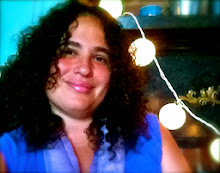A Lifetime Arc Of Menarche Through Menopause And Beautiful Stories To Accompany The Journey
Cycling To Grandma's House
Becoming Peers: Mentoring Girls Into Womanhood
A Time To Celebrate: A Celebration Of A Girl's First Menstrual Period
Moon Mother, Moon Daughter
Moon Time: A Guide To Celebrating Your Menstrual Cycle
105 Ways To Celebrate Menstruation
Her Blood Is Gold: Awakening To The Power Of Menstruation
A woman's life flows analogous to moon cycles:
Early Child Age/Girl: New Moon
Middle Child Age/Adolescent: Waxing Crescent Moon
Later Child Age/Young Adult: Half Moon~First Quarter
Early Middle Age: Waxing Gibbous Moon
Middle Middle Age: Full Moon
Later Middle Age: Waning Gibbous
Early Senior Age: Half Moon~Third Quarter
Middle Senior Age: Waning Crescent
Later Senior Age: New Moon
From moonconnection.com:
The Moon Cycle
The term "moon cycle" (or "lunar cycle") refers to the moon's continuous orbit around the earth. As the moon orbits the earth, its appearance (the "phase") changes and thus gives us an indication of the moon's progress in the cycle (the "age").
The sun always illuminates exactly one-half of the moon, but we see it at different angles as it rotates around the earth. With the naked eye, we can see only the part of the moon that the sun is illuminating. For instance, a crescent moon is what we call the moon when we see only a small portion of its illuminated surface.
We give the parts of the moon cycle different names, according to how the moon appears to us. In order of appearance:
New (also called the Dark Moon) - not visible
Waxing Crescent
First Quarter - commonly called a "half moon"
Waxing Gibbous
Full - we can see the entire illuminated portion of the moon
Waning Gibbous
Third Quarter - another "half moon", but the illuminated part is opposite of the First Quarter
Waning Crescent
New - back to the beginning
This complete lunar cycle (New Moon to New Moon) is also called a "lunation". During this time the moon will completely circle the earth. That's the scientific definition, but you can take any phase; for instance a so-called "full moon cycle" would be from Full Moon to Full Moon.
For a more complete explanation of the moon cycle, please visit our page "Understanding The Moon Phases", which includes a moon phase diagram.
Astrology and the Lunar Cycle
Aside from the scientific explanation, the term "moon cycle" is often heard in astrological circles. According to astrology, the moon's cycle can affect the way we feel about things. In particular, when the moon is full or new, both males and females can experience dramatic changes in their mood and behavior.
When the moon is full, stress becomes a major factor and people become more sensitive to details. An overload of work will add to the frustration and people will deal with their own needs rather than paying attention to others' needs. Often, a lack of assertiveness will be obvious.
A new moon brings with it the sense of calmness. In this moon cycle, people's emotions get back to normal, their determination will return with the feeling that anything can be accomplished, and there will be more energy and acceptance of other other's ideas.
http://www.moonconnection.com/moon_cycle.phtml
